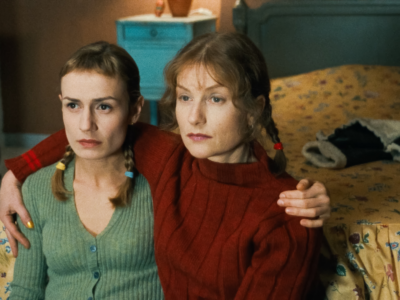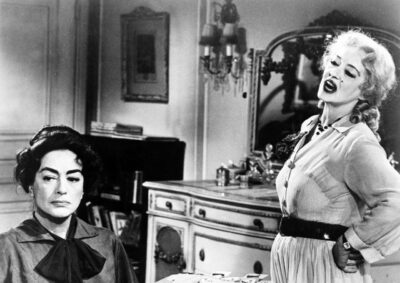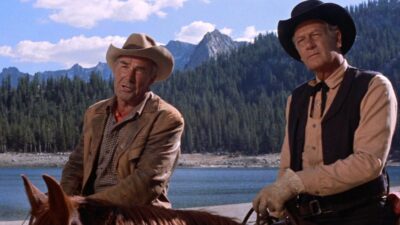Spring forward by looking back at some classic films next month. We’ve got two modern French classics, Claude Chabrol’s dark masterpiece La Cérémonie (April 2 at the Royal with actress Jacqueline Bisset in person for a Q&A, and Chocolat by Claire Denis (April 24 at multiple theaters). We’ll also be screening two quintessential films from the milestone movie year 1962: What Ever Happened to Baby Jane? and Ride the High Country, to coincide with the publication of the paperback edition of Cinema ’62: The Greatest Year at the Movies. The films will have separate screenings at two different Laemmle locations, with What Ever Happened to Baby Jane? only at the NoHo 7 in North Hollywood on April 11, and Ride the High Country only at Newhall in Santa Clarita on April 16. Both films are notably among nine 1962 movies selected by the National Film Registry of the Library of Congress for “historical, cultural, or aesthetic significance.”
Acclaimed French auteur Claude Chabrol was one of the masters of the French New Wave, along with Francois Truffaut, Jean-Luc Godard, and Eric Rohmer. His acclaimed films of the 1950s, Le Beau Serge and The Cousins, established Chabrol’s reputation as an astute observer of contemporary French society.

He continued to demonstrate satirical gifts in his later films but added an interest in suspense and crime stories with such films as La Femme Infidele, This Man Must Die, Le Boucher, and Violette, starring Isabelle Huppert. His partnership with Huppert continued over several films, including a new adaptation of Flaubert’s Madame Bovary and Story of Women, a bold study of a woman executed for performing illegal abortions during World War II.
Chabrol re-teamed with Huppert, who joined rising actress Sandrine Bonnaire and veterans Jacqueline Bisset and Jean-Pierre Cassel, for La Cérémonie, adapted from the novel by acclaimed mystery writer Ruth Rendell. Bonnaire plays a maid who is hired to work for a wealthy family living in an isolated mansion in Brittany. Eventually she strikes up a friendship with a savvy postal worker living in the nearby town, played by Huppert. The two young women devise a plan to take advantage of Bonnaire’s employers, played by Bisset and Cassel.
Huppert won the Cesar award, France’s equivalent of the Oscar, for her performance, and Bisset earned a nomination for Best Supporting Actress. The Guardian named La Cérémonie as one of the 25 greatest crime films of all time. Craig Williams of the British Film Institute called it “perhaps Chabrol’s greatest achievement.” Both the Los Angeles Film Critics Association and the National Society of Film Critics named it the Best Foreign Language Film of 1995.
The cult classic What Ever Happened to Baby Jane? stars Bette Davis and Joan Crawford, two screen legends from the Golden Age of Hollywood, who were facing career fadeouts by 1962, the plight of aging actresses both then and now. Studio disinterest and the lack of appropriate roles forced them to seek unorthodox parts, and the screen adaptation of a Henry Farrell novel about the intense psychological rivalry between two reclusive sisters, former actresses holed up in Hollywood obscurity, seemed tailor-made. Producer-director Robert Aldrich hired Lukas Heller to write the screenplay, and the expert mix of black comedy and suspense, along with powerful acting by the cast, made the film a worldwide success. The movie scored a trifecta: a box-office bonanza, pop culture phenomenon, and show business sensation. It also revived the careers of both Davis and Crawford, restoring their places in the Hollywood pantheon, and spawned a genre of Grande Dame Guignol that gave veteran actresses roles for the next decade.

Part of the appeal of the film was the alleged off-screen rivalry between Davis and Crawford, and that rumored feud fostered high anticipation for both the press and fans of the day. “Feud,” a 2017 miniseries about the rivalry between Davis and Crawford while shooting the movie, sparked the most recent interest in the film. When the film was nominated for five Academy Awards, with Bette Davis among the Best Actress nominees, the feud was putatively exacerbated by the omission of Crawford. It won the Oscar for black-and-white costume design, and among its other nominations were Victor Buono (Best Supporting Actor) in his screen debut, and master cinematographer Ernest Haller (Oscar winner for Gone With the Wind), who had worked with both stars in their 1940s heyday. Among critical reception at the time, the Chicago Daily News saw “…the outlines of a modern Greek tragedy. Yet it is great fun too, because this is pure cinema drama set in a real house of horrors.”
Ride the High Country is now regarded as one of the all-time western classics and was only the second feature film by director Sam Peckinpah, who had honed his writing-directing skills on television westerns. Peckinpah also had a hand in revising an original screenplay by writer N.B. Stone, Jr. about two aging former lawmen tasked with a gold delivery from a mining camp at the turn of the twentieth century. Hollywood Golden Age actors Randolph Scott (in his final film) and Joel McCrea portray the venerable gunfighters, appropriate casting for the veteran actors who had extended their careers in post-war screen oaters. The film also features Mariette Hartley in her screen debut and character actors Warren Oates, L. Q. Jones, James Anderson, Edgar Buchanan, and R. G. Armstrong, with expert color cinematography by Lucien Ballard, another Golden Age veteran who became a frequent Peckinpah collaborator.

Ride the High Country’s setting at the twilight of the Old West and its theme of men who have outlived their times but cling to their moral code (for the most part) would be revisited by Peckinpah later in his career, most notably at the end of the decade in The Wild Bunch and into the 1970s in The Ballad of Cable Hogue and Pat Garrett and Billy the Kid. Although The Wild Bunch would ensure his legacy, the underseen Ride the High Country is now considered a seminal film in the western canon and his first masterpiece.
MGM underwent a regime change after the film’s production wrapped and its new president thought so poorly of the film that it was relegated to the neighborhood theater circuits as the lower half of double bills, which effectively killed its U.S. box office. But critics worldwide rescued the film from obscurity and heralded the arrival of a major new talent in Peckinpah. Among the accolades were the Paris Council of Film Critics’ ranking as one of the best films of the year. Newsweek placed it atop their year-end ten best list, and upon its original release exclaimed, “In fact, everything about this picture has the ring of truth, from the unglamorous settings to the flavorful dialogue and the natural acting, Ride the High Country is pure gold.”
Claire Denis drew on her own childhood experiences growing up in colonial French Africa for Chocolat, her multilayered, languorously absorbing feature debut, which explores many of the themes that would recur throughout her work. Returning to the town where she grew up in Cameroon after many years living in France, a white woman (Mireille Perrier) reflects on her relationship with Protée (Isaach De Bankolé), a Black servant with whom she formed a friendship while not fully grasping the racial divides that governed their worlds. We’ll show Chocolat April 24 at the Claremont, Glendale, Newhall and Royal.

